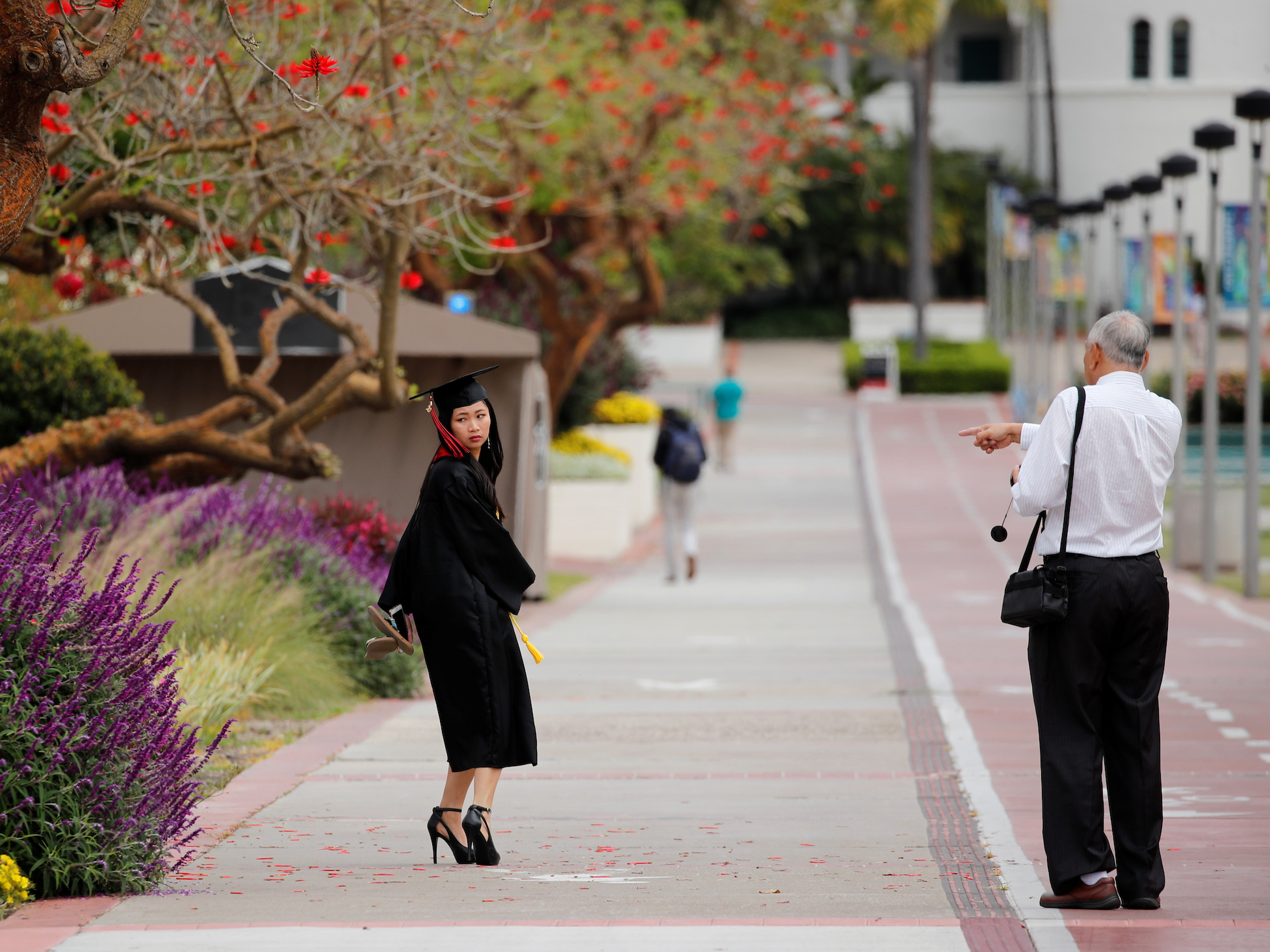- A growing number of universities and colleges across the US are opting for online-only courses in the fall 2020 semester.
- The coronavirus could resurge in the fall, bringing a wave of infections much larger than the one the country is currently riding.
- Here are the schools that aren’t planning to return to campus this fall.
- Visit Business Insider’s homepage for more stories.
As universities conduct courses remotely and prepare for online graduations, some are deciding not to return to in-person classes in the fall.
California State University, the largest four-year public university system in the US, has cancelled in-person classes for the fall semester at all 23 of its campuses. Instead, classes will take place almost exclusively online, Chancellor Timothy White said at a Board of Trustees meeting on Tuesday.
“Our university, when open without restrictions and fully in person… is a place where over 500,000 people come together in close and vibrant proximity,” White said at the meeting, according to the Los Angeles Times. “That approach sadly just isn’t in the cards now.”
Harvard Medical School also announced Tuesday that its incoming class of students will start classes remotely in fall. Other campuses, like those of the University of California system, are considering a mixed approach: mostly online, but with some courses in a classroom or lab setting.
Here are the other colleges and universities that plan to remain online for the fall 2020 semester:
- College of the Desert
- Dallas County Community College District
- Portland Community College
- Santa Rosa Junior College
- Sierra College
- Wayne State University
More universities will likely join this cohort soon, since the pandemic is unlikely to subside by fall.
"The idea of having treatments available, or a vaccine, to facilitate the reentry of students into the fall term would be something that would be a bit of a bridge too far," Anthony Fauci, director of the National Institute of Allergy and Infectious Diseases, told Congress on Tuesday. "Even at the top speed we're going, we don't see a vaccine playing in the ability of individuals to get back to school this term."
Coronavirus could make a disastrous comeback in the fall
In an April report, researchers at the Center for Infectious Disease Research and Policy laid out three scenarios for what the next 18 to 24 months might look like.
The worst - and most likely - would be that this first wave is followed by a larger wave in the fall or early winter. After that would come one or more smaller subsequent waves in 2021.

This mirrors what happened during the 1918 Spanish influenza pandemic and the 2009 H1N1 flu.
A second wave of infections with an even higher peak would require US states (and other countries) to reinstitute mitigation measures like lockdowns, the authors wrote.
"States, territories, and tribal health authorities should plan for the worst-case scenario," they added.
When it comes to high schools, elementary schools, and kindergartens, there is little evidence that closures significantly prevent the spread of COVID-19. This week, experts recommended reopening these lower-level schools across the US. But universities are a different story. Young adults travel from across the country - sometimes across the world - to live in dorms, eat in dining halls, hop between classes, and party together.
"If you were to design a place to make sure that everyone gets the virus, it would look like a nursing home or a campus," Paul LeBlanc, the president of Southern New Hampshire University, told The Atlantic.
Aylin Woodward contributed reporting.
